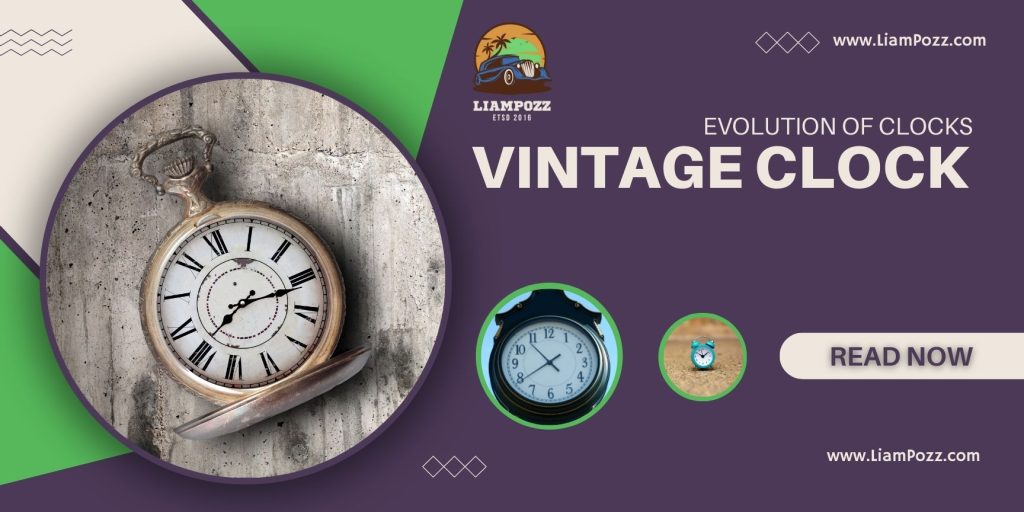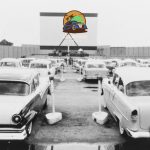In just a lift of our phone or one push of a button, we can instantly check the time. But have you ever wondered what the evolution of clocks has been like?

In the olden days, it was much more difficult for people to know the hour and the minutes, the ancients used the sun as their natural clock, watching the patterns of the sun and the direction where it set, the evolution of clocks dates back to 2000 BC, when the earliest form of time-telling devices was traced back to, ancient civilizations created their own devices with the use of the resources they had.
From Sundials to Smart Clocks

Let’s take a look at some of the first time-telling devices that prompted the evolution of clocks, the Egyptians, the Mesopotamians, the Persians, and the Greeks first used water clocks, on the other hand, candle clocks were most popular in the United Kingdom and the East Asian countries, Japan and China.
Sundials were the time-telling devices of those in Tibet, Persia, Mesopotamia, India, and some countries in Europe there were ancient records that show the use of the sandglass or hourglass during the same time as the appearance of the earlier devices.
Although these devices were unreliable, people then only depended on these inventions to keep track of time, as time went on, inventors made clock mechanisms to simplify the observance of time, the clocks we have today help us by indicating the exact time at the moment and also show the time of other places around the globe.
The Earliest of the Mechanical Clocks

The first version of the mechanical clock stood in China in the year 1094, invented by the Buddhist monk, Su Song, this clock tower was based on the astronomical calendar of the Chinese people. The mechanism involved in this clock tower was from the design of the water wheel and indicated every hour that passed.
The design featured the concept of escapement–a necessary application in mechanical clockwork–which required regulated and precise bursts of power that came from the machine itself. It fell to its demise because of barbarians.
The Next Generation of Mechanical Clocks

Throughout history, inventors have reinvented and continuously improved the mechanisms of a clock, the first mechanical clock to be made had a balance wheel that swung from left to right, which indicated a beat or a tick, the earliest recorded device of the mechanical clock was created in England in 1386 and France three years later, these old clocks instantly became the standard clock for everyone since it was far more accurate than the older methods used to tell the time, the discovery of the idea to use cogs and gears in the clock mechanism paved the way for establishments to create clocktowers in the 1490s.
One of these was in 1493, the St. Mark’s Tower in Venice, unfortunately, they did not reign long because they quickly lost power, what followed after was the pendulum clock, one of the greatest inventors, Galileo Galilei, had already conducted studies in using a pendulum to tell the time in the early 1580s, unfortunately, he never made any prototype to bring his idea to life.

In 1656, Christiaan Huygens became the first pendulum clockmaker, adapted from the designs and studies of Galilei, William Clement, an Englishman, invented the first tall-case clock in the 1670s.
The grandfather clock incorporated the pendulum design into its mechanism, this time-telling device was a standard piece of furniture in every household and establishment, and it is one of the most accurate clocks to date, these were only called “grandfather clocks” because of a song released in 1876 called “My Grandfather’s Clock” by Henry Clay Work.
Following this invention was the electric clock in the 1840s, the battery-powered clock manufactured in the 1910s, and the quartz clock created in the 1920s.
The Modern Way of Telling Time

The digital revolution was what changed the face of clocks forever, with the emergence of smart clocks, this clock performs things that those in the past could not do, in collaboration with Google, Lenovo released the Lenovo Smart Assistant in the United States in the year 2017, it included the voice assistant of Amazon’s Alexa to answer your queries searched through the Internet.
Firstly, this clock allows you to set alarms, appointments, or play your favorite tunes as a speaker. Secondly, you can even control your other smart devices in the household with it, the evolution of clocks has come a long way since the ancient times when people used sun as their time-telling guide, right?
Time is of The Essence
People are throwing this infamous saying around here and there whenever someone rushes, however, this line holds a deeper meaning than it does today, the adage means that one should give importance to time, another quote that could be compared or is almost similar to this is, “Time is gold.”
In other words, time is valuable, it is no surprise that we, as humans, tend to take things for granted, especially time, we should always make the best use of our time whenever we can.
What Is The History Of Clocks?
Clocks have been around for centuries, and their history is a rich and interesting one. The first clocks were not actually used to tell time, but instead were used as calendars. They were large, cumbersome objects that were not used for everyday purposes, but were instead kept in churches and used to tell people when services were scheduled. The first true clocks were not invented until the 14th century, and they were very simple devices that only told time in hours and minutes. They were not very accurate, and they were not used for everyday purposes. Instead, they were used by astronomers and scientists to track the passage of time.
The first clocks to be used in everyday life were the pendulum clocks, which were invented in the 17th century. These clocks were much more accurate than the earlier clocks, and they quickly became popular in homes and businesses. Clocks have come a long way since their early days, and they are now an essential part of everyday life. Clocks can be found in all sorts of places, such as homes, schools, businesses, and even prisons. There are all sorts of different types of clocks, too, such as wall clocks, table clocks, alarm clocks, and grandfather clocks.
Clocks are used to keep track of time, and they can be very helpful for organizing and planning schedules. They can also be used to track time during certain activities, such as studying or working. Clocks can also be used to wake people up in the morning or to remind them of important events. Most clocks are powered by batteries or electricity, and they typically have a face, hands, and a clockwork mechanism. The face of a clock typically has the numbers one through twelve displayed on it, and the hands indicate the time. The clockwork mechanism is what actually powers the clock, and it can be powered by a battery or by electricity.
How Have Clocks Evolved?
Clocks provide a way of measuring time and have been used for centuries. Clocks evolved from sundials, which are devices that use the sun to measure time. Sundials were first used by the Egyptians in 1500 BC. Clocks evolved from water clocks, which are devices that use water to measure time. Water clocks were first used by the Chinese in 1000 BC.
Clocks evolved from candle clocks, which are devices that use candles to measure time. Candle clocks were first used by the Arabs in the 9th century AD. Clocks evolved from hourglasses, which are devices that use sand to measure time. Hourglasses were first used by the Europeans in the 13th century AD.
Clocks evolved from mechanical clocks, which are devices that use gears and springs to measure time. Mechanical clocks were first used by the Europeans in the 14th century AD. Clocks have continued to evolve and now include digital clocks, which use a number of different technologies to display the time. The two most common types of digital clocks are LED clocks and LCD clocks.
LED clocks use light-emitting diodes to display the time. They are usually less expensive than LCD clocks and are more energy efficient, as they use less power. LED clocks are also often brighter and can be more easily seen in direct sunlight. LCD clocks use liquid crystal displays to display the time. They are typically more expensive than LED clocks, but use less power and are often more accurate. LCD clocks can also be customized to display a variety of different information, such as the date, time, weather, or stock prices.
What Is The History Of The First Clock?
The first clock is believed to have been created by the Egyptians in approximately 1500 BC. This clock was a water clock, which used a basin of water to measure time. The water would slowly drip out of a small hole, and the time would be measured by how long it took for the water to run out.
The first mechanical clock was created in Europe in the 1300s. This clock used gears and weights to measure time.
Why Did Clocks Evolve?
The Clock is an invention that is said to date back to the 4th century BC, when it was used in China. However, the modern clock as we know it began to be developed in the late Middle Ages. So why did clocks evolve? One reason is that clocks allowed people to measure time more accurately. Before clocks, people had to rely on natural phenomena to tell time, such as the sun or the moon. But with clocks, people could tell time even at night or in dark rooms.
Clocks also allowed people to organize their lives more efficiently. For example, by knowing what time it was, people could plan their activities for the day more effectively. Clocks also helped to regulate trade and commerce, since businesses needed to know when to open and close.
Finally, clocks helped to create a sense of order and discipline in society. By knowing what time it was, people could be more punctual and organized. This helped to make society run more smoothly and efficiently. Clocks also helped to bring about the Industrial Revolution, as people needed to be on time for their factory shifts.
Conclusion
In conclusion, time is ever constant while we should never remain stagnant in life. As we experience time, it is important to use our time wisely by not only learning from our past but also planning for our future. Doing so, will allow us to make the most of our time and fulfill our goals.
It is said that time is the most precious commodity anyone has. Unlike other resources, time cannot be replenished nor regained after it is gone. As a result, it is important for each and everyone of us to use our time wisely. Unfortunately, many people squander their time without realizing it. They may spend their days watching TV, browsing the internet, or sleeping. While these activities can be enjoyable, they are not productive and will not get us any closer to our goals.
There are many things we can do to make the most of our time. One way is to set goals and make a plan of action to achieve them. This involves breaking down our goals into smaller steps that we can accomplish on a daily or weekly basis. For example,





